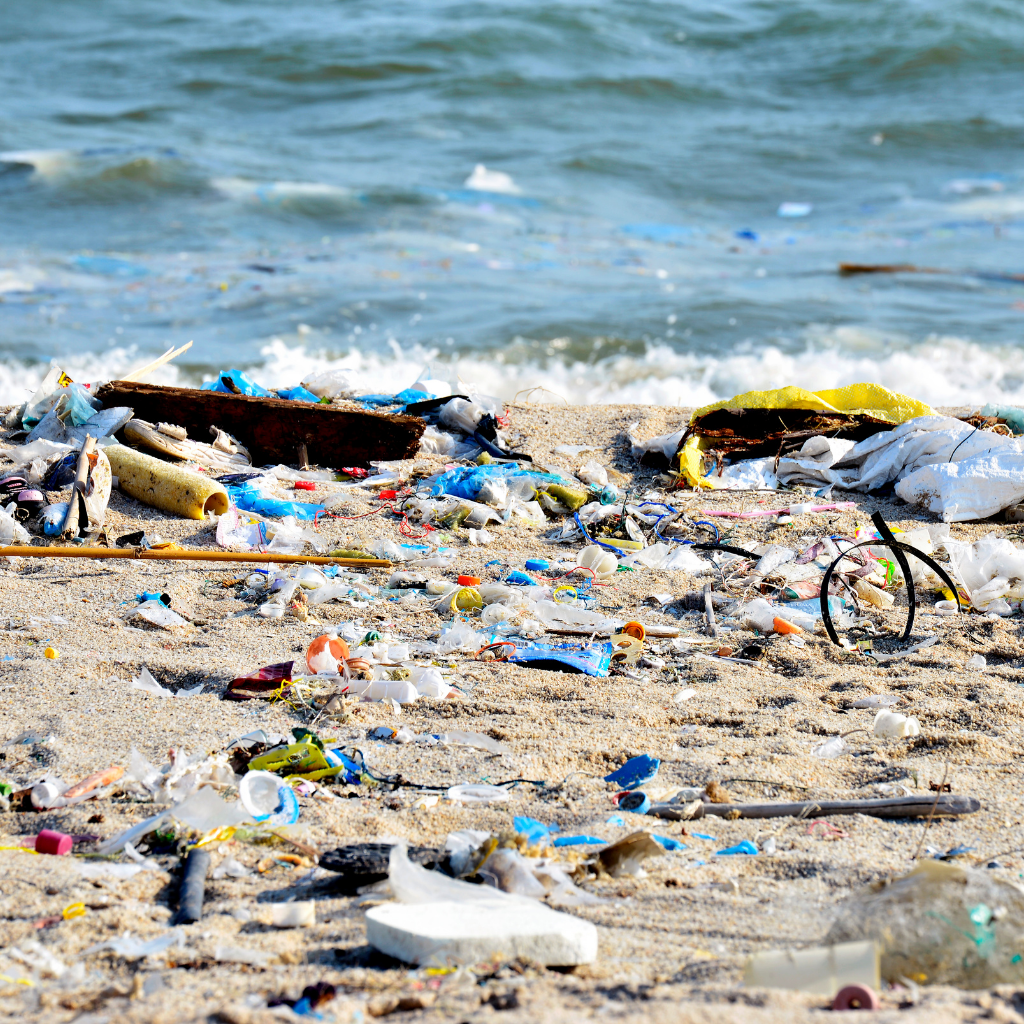It’s common knowledge that plastic has worked its way into our oceans at an alarming rate. But how much do you really know about it? Why is everyone making such a fuss about saving the ocean? What’s up with everyone ditching straws? These few facts can clear all of that up for you! Let’s get to the bottom of how the ocean’s ecosystem is suffering from such a seemingly casual, everyday substance. These plastic ocean pollution facts show just how crucial it is to adjust our actions and save the seas!
Follow us on social media to find even more information on ways to help save our oceans! We’re always sharing new facts and ideas about living a more eco-friendly lifestyle. Find us on any social media platform @foxyfossils.
6 Plastic Ocean Pollution Facts That You Should Know
The amount of plastic drifting through our oceans outweighs the fish.
With one sentence, this shocking fact displays just how tragic our plastic problem has become. Not only is this discouraging to think about, but it has real implications. With more plastic drifting through the sea than fish, it creates real obstacles that impact marine life every day. Many have seen photos or videos of marine life swimming with a plastic bag hanging from their fin, or a bottle cap ring wrapped around them. Knowing this reality, these instances are probably more common than we think.
The Great Pacific Garbage Patch covers an area twice the size of Texas.
Ocean pollution tends to congregate, which is both unfortunate and helpful. It’s helpful in the sense that we can see just how big the problem really is and...well, it’s big. There are five large garbage patches across the world, but the largest is the Great Pacific Garbage Patch that covers an area twice the size of Texas. It spans all the way from the west coast of the United States to Japan.
Microplastics pose an even greater threat than things like plastic bottles.
It isn’t just plastic straws and bottles that we’re worried about. As larger plastics spend time in the ocean, they begin to break down into smaller pieces known as microplastics. These pose an even greater threat as they make their way directly into the food chain, often being mistaken for food by fish. This isn’t just happening on a small scale, either. Scientists and fishermen all over the world have been shocked to find the bellies of fish full of plastic pieces. Not only does this endanger the marine ecosystem, but also our own through the (almost) 200 billion dollar seafood industry.
Much of the ocean trash sinks to the bottom.
While we can see that plastic ocean pollution is a huge problem by the amount floating on the surface, it’s also true that much of the ocean’s trash sinks to the bottom. Meaning, we may actually have a much larger problem than we realize.
Dead zones are growing.
Scientists have deemed “dead zones” as one of the most significant and damaging effects of human life on Earth. Dead zones are large areas of the ocean with reduced oxygen levels (either low oxygen or none) that make it impossible for life to exist there. This is almost like a parallel effect to plastic ocean pollution, as both happen through many of the same practices--poor waste management. The largest to date exists in the Gulf of Mexico due to an excess of nutrients dumped into the ocean from the Mississippi River Basin. These dead zones aren’t a lost cause yet, though! They can be rehabilitated through proper waste management.
80% of trash in the ocean stems from improper waste management.
One of the biggest problems in waste management stems from runoff, or the way water travels from land into the ocean. It often isn’t just water, though, carrying plastic, oil, and other garbage with it out to sea. Other practices like ocean dumping (yes, intentional mass dumps of garbage into the sea), littering, and ocean mining are also to blame.
Help Foxy Fossils Fight for Ocean Conservation
While it may seem like a small insignificant act, being a conscious consumer is one way you can help fight these problems. That means buying from sustainable, eco-friendly businesses that utilize natural materials, instead of artificial ones that contribute to pollution later in their lifecycle. Consumer consciousness around things like waste and carbon footprints hold businesses accountable for their impact on the environment.
One of the core values of Foxy Fossils is combating ocean pollution, considering much of our materials come from marine life that swam through the depths millions of years ago. We use natural fossils pulled straight from the coast of South Carolina. Plus, a portion of every sale goes towards shark and marine conservation! You can also check out our blog to find more eco-friendly companies. Check a few of our best-selling products below!






